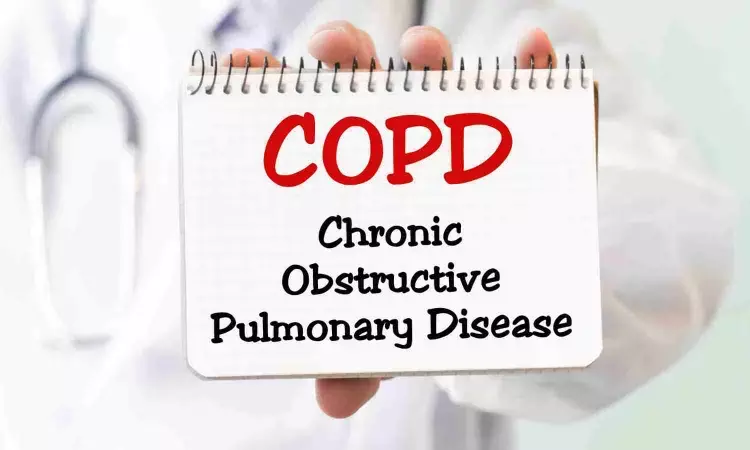- Home
- Medical news & Guidelines
- Anesthesiology
- Cardiology and CTVS
- Critical Care
- Dentistry
- Dermatology
- Diabetes and Endocrinology
- ENT
- Gastroenterology
- Medicine
- Nephrology
- Neurology
- Obstretics-Gynaecology
- Oncology
- Ophthalmology
- Orthopaedics
- Pediatrics-Neonatology
- Psychiatry
- Pulmonology
- Radiology
- Surgery
- Urology
- Laboratory Medicine
- Diet
- Nursing
- Paramedical
- Physiotherapy
- Health news
- Fact Check
- Bone Health Fact Check
- Brain Health Fact Check
- Cancer Related Fact Check
- Child Care Fact Check
- Dental and oral health fact check
- Diabetes and metabolic health fact check
- Diet and Nutrition Fact Check
- Eye and ENT Care Fact Check
- Fitness fact check
- Gut health fact check
- Heart health fact check
- Kidney health fact check
- Medical education fact check
- Men's health fact check
- Respiratory fact check
- Skin and hair care fact check
- Vaccine and Immunization fact check
- Women's health fact check
- AYUSH
- State News
- Andaman and Nicobar Islands
- Andhra Pradesh
- Arunachal Pradesh
- Assam
- Bihar
- Chandigarh
- Chattisgarh
- Dadra and Nagar Haveli
- Daman and Diu
- Delhi
- Goa
- Gujarat
- Haryana
- Himachal Pradesh
- Jammu & Kashmir
- Jharkhand
- Karnataka
- Kerala
- Ladakh
- Lakshadweep
- Madhya Pradesh
- Maharashtra
- Manipur
- Meghalaya
- Mizoram
- Nagaland
- Odisha
- Puducherry
- Punjab
- Rajasthan
- Sikkim
- Tamil Nadu
- Telangana
- Tripura
- Uttar Pradesh
- Uttrakhand
- West Bengal
- Medical Education
- Industry
What is effect of low-dose cadmium on airway epithelial cells in COPD patients?

Cigarette smoke exposure is associated with the development and severity of chronic obstructive pulmonary disease, or COPD, which is the third leading cause of death worldwide.
Cigarette smoke contains 2 to 3 micrograms of cadmium, a highly toxic metal and environmental pollutant, per cigarette. Burning tobacco releases cadmium oxide that can be adsorbed onto microparticles in smoke that travel deep into the lungs. Furthermore, the body is not able to remove cadmium, which accumulates in longtime smokers.
In a Scientific Reports study, University of Alabama at Birmingham researchers show how a low dose of cadmium produces a deleterious stress in lung epithelial cells, and their findings highlight potential therapeutic targets to be explored in cadmium-exposure and subsequent lung injury.
The research, led by Veena Antony, M.D., a professor in the UAB Department of Medicine, focuses on microRNA-381, and the expression of a chloride channel gene called ANO1 in lung tissue samples and airway epithelial cells. ANO1 helps produce mucus in the airway; but overproduction of mucus in chronic lung disease can lead to airway thickening and mucus blockage, adding to severity of the disease. Thus, overexpression of ANO1 can exacerbate COPD.
The UAB researchers compared lung tissue samples from nine “never” smokers, who had zero history of cigarette smoking, and lung tissue samples from 13 “ever” smokers with COPD who had a history of smoking that ranged from 15 to 25 pack years per person. One pack year is generally defined as smoking one pack of cigarettes a day for one year. The researchers found that “ever” smokers, in contrast to “never” smokers, had upregulated ANO1 expression in airway epithelial cells.
Similarly, airway epithelial cells in a bronchoalveolar lavage fluid from one non-COPD subject and one smoker with COPD showed greater ANO1 expression in the COPD-subject cells.
The researchers next tested the direct effect of very low doses of cadmium on normal human airway epithelial cells. These cells were grown on an air-liquid interface that allows the airway cells to differentiate normally. Two weeks of exposure to 0.5 or 1.0 micromolar cadmium chloride in the liquid layer increased expression of ANO1 12 to 14 times.
MicroRNAs have the ability to downregulate expression of a gene by direct interaction with that gene’s mRNA sequence. The UAB team used computer software analysis to identify microRNA-381 as the microRNA with most interaction with ANO1 mRNAs, suggesting that microRNA-381 is a negative regulator of ANO1. Some heavy metals are known to negatively regulate microRNAs.
Antony and colleagues used a synthetic inhibitor for microRNA-381 to inhibit the expression of microRNA-381 in primary human airway epithelial cells from subjects with COPD, and found that ANO1 expression was upregulated significantly. In contrast, adding a microRNA-381-mimic-a synthetic RNA that acts like microRNA-381 to increase the amount of negative regulation-to those cells decreased ANO1 expression. These results strengthened the premise of the UAB researchers that cadmium negatively regulates microRNA-381 expression to upregulate ANO1 expression in airway epithelial cells.
Lastly, researchers found that, even when primary human airway epithelial cells from subjects with COPD were also exposed to 1 micromolar cadmium chloride, the microRNA-381 inhibitor still upregulated ANO1 and the mimic still downregulated ANO1.
“Our observations from experiments involving low-dose cadmium-exposure of epithelial cells suggest that ANO1 is a direct target for miR-381, which is downregulated upon low-dose cadmium exposure,” Antony said. “Thus, cigarette-induced cadmium-toxicity may alter cellular homeostasis mechanisms at very low concentrations, and cadmium-exposure in a person with an existing pulmonary condition can have an additive or adverse effect with increased susceptibility toward infections and environmental allergens.
“This interaction of cadmium, microRNA-381 and ANO1 suggests that microRNAs may act as potential therapeutic targets to be explored further in cadmium-exposure and subsequent lung injury.”
Reference:
Singh, P., Li, F.J., Dsouza, K. et al. Low dose cadmium exposure regulates miR-381–ANO1 interaction in airway epithelial cells. Sci Rep 14, 246 (2024). https://doi.org/10.1038/s41598-023-50471-z.
Dr Kamal Kant Kohli-MBBS, DTCD- a chest specialist with more than 30 years of practice and a flair for writing clinical articles, Dr Kamal Kant Kohli joined Medical Dialogues as a Chief Editor of Medical News. Besides writing articles, as an editor, he proofreads and verifies all the medical content published on Medical Dialogues including those coming from journals, studies,medical conferences,guidelines etc. Email: drkohli@medicaldialogues.in. Contact no. 011-43720751


